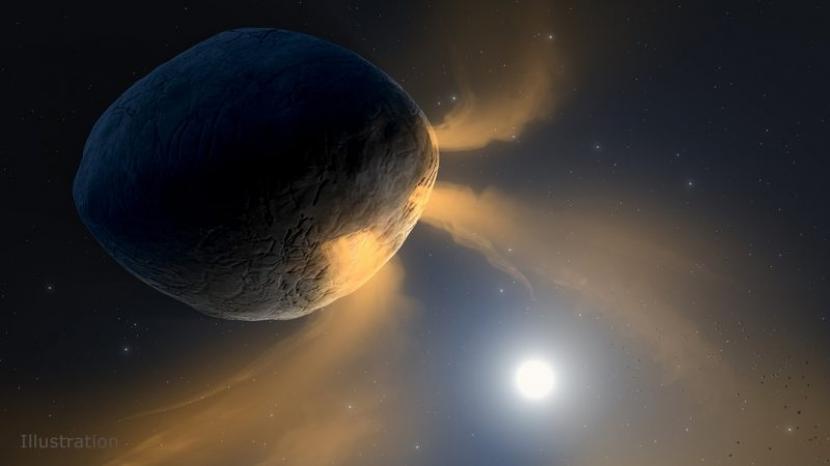The asteroid Phaethon is said to get brighter as it approaches the sun.
REPUBLIKA.CO.ID, CALIFORNIA — There’s something strange about asteroid near Earth 3200 Phaethon. The asteroids brighten as they approach the sun, although they lack the ice reserves that normally cause this effect as they evaporate and scatter sunlight.
Ice-laden comets that get brighter when heated, which is why Phaethon has long puzzled astronomers. Now a new study suggests that one particular chemical element may be behind this behavior.
Joseph Masiero of the California Institute of Technology said Phaethon is a strange object that is active as it approaches the sun.
“We knew it was an asteroid and the source of the [hujan meteor] Geminid. But it contains little or no ice, so we were intrigued by the possibility that sodium, which is relatively abundant in asteroids, could be the element driving this activity,” Masiero said. Sciencealert, Sunday (22/8).
Phaethon takes 524 days to complete a full orbit, during which time the sun heats it up to a maximum of 1,050 Kelvin (777 degrees Celsius or 1,430 degrees Fahrenheit). Any ice on the asteroid would have burned out long ago, but the researchers used computer models to show the sodium was still there, fizzing beneath the surface.
This heating and hissing may explain not only the brightness of the asteroid, as sodium escapes through cracks and fissures in the crust, but also the release of rock that can be seen from Earth during the Geminid meteor shower each December. Phaethon’s weak gravitational pull will make debris easier to remove.
Geminid meteors are relatively low in sodium due to the light they give off when they burn in Earth’s atmosphere, and this can again be explained by the modeling carried out by the research team. Experiments were then carried out on fragments of the Allende meteorite, which landed in Mexico in 1969 and may have originated from an asteroid such as Phaethon.
When heated, the behavior of the fragments confirmed the sodium could indeed turn into vapor and be released from the asteroid, at the kind of temperatures Phaethon might have experienced.
“This temperature happens to be around the point where sodium escapes from its rock components. So we simulated this warming effect during the ‘day’ at Phaethon—its three-hour rotation period,” said planetary scientist Yang Liu, of NASA’s Jet Propulsory Laboratory (JPL).
“When comparing sample minerals before and after our laboratory tests, sodium is lost, while other elements are left behind. This suggests that the same is possible for Phaethon and appears to be in agreement with our model results,” Yang said.
As well as offering some interesting insights into what happened at Phaethon, the study also suggests that the differences between rocky asteroids and icy comets may not be as clear-cut as previously thought. The modeling and experimental results here can provide astronomers with some useful data that applies to other low-perihelion asteroids that fly close to the sun.
“Our latest finding is that if the conditions are right, sodium can explain the nature of some active asteroids, making the spectrum between asteroids and comets more complex than we previously realized,” Masiero said.
– .


